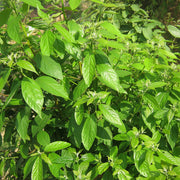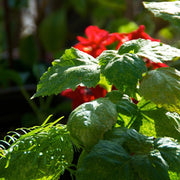It's that magical time of the year where change is abundant. From the color of the leaves, to the chill of the air, the familiarities of summer have given way to the unpredictability of fall and winter. Chapped lips and all, the cold weather season is descending upon us.
As we phase our wardrobes from shorts to sweaters, the boxes of summer clothes migrate to the garage, much like the birds to the southern hemisphere, we cling to the warmth of summer despite its absence.
The good news is we don't have to face the cold alone. We have the cinnamons to warm us!
Cinnamon Did You Know?
Cinnamon comes from an evergreen tree that is quite bushy and can grow up to 50 feet tall and has a very strong aroma.
Both Cinnamon Bark Oil (Cinnamomum zeylanicum) and Cinnamon Leaf Oil (Cinnamomum zeylanicum) essential oils are produced from this tree.
There are a handful of stories that have been passed around throughout the years that cinnamon may have been an ingredient used to keep grave thieves from catching the bubonic plague. The cinnamon tree is indigenous to South East Asia, India, and Sri Lanka, which makes sense as it loves a warm climate!
The most common means of extraction for both the cinnamon bark and cinnamon leaf essential oils are steam distillation.
The cinnamons have also been known as effective gastrointestinal stimulants as they help calm digestive spasms. They're great at aiding the body in getting rid of contagious diseases and viral infections.
Both cinnamon bark and cinnamon leaf essential oils help relieve aches and pains due to colds as they are very warming oils.
Additionally, they help support the immune system, and stimulate circulation.
Out of the two, cinnamon bark essential oil is more skin irritating than cinnamon leaf, and shouldn't be used in more than a 0.1%-0.5% dilution. While cinnamon leaf can be used at a 1% dilution in blends, but shouldn't be blended at a higher percentage.
Both cinnamon bark and cinnamon leaf essential oil can be used in a diffuser, but in small amounts, as they can be irritating to the eyes and nose. It's important to remember they should not be used during pregnancy or with children under 10.
Cinnamon Bark
- Kills parasites
- Highest in Aldehydes
- Known as true cinnamon
- Very hot & stimulating
- Mostly for use in a diffuser
- While many aldehydes are considered cooling, cinnamaldehyde is very hot & stimulating
- Can be used on the skin at low dilutions. 0.1- 0.5% (2-3 drops per 1 oz. of carrier). Be sure to use a skin nourishing carrier
- One of the strongest antibacterial oils
Cinnamon Bark Safety
Oils with a significant aldehyde content, like cinnamon bark, can be irritating to the skin, and especially damaging if they are oxidized. Citral, a main component in these oils, is irritating to the skin and the mucous membranes.
Low concentrations of aldehydes in blends are generally safe for the skin. Use 2-3 drops of Aldehyde high oils per ounce of carrier and combine with oils that are skin nourishing such as lavender (Lavandula angustifolia) that are are higher in monoterpenes and heavier oils like patchouli (Pogostemon cablin) that are skin healing.
Aldehydes are very susceptible to oxidation, keep cool and dark. People with estrogen-related cancers should avoid internal use and high-dose, long-term skin use of oils high in citral. In such cases, oils high in citral can be used in 1% dilutions for short periods without concern.
Cinnamon Leaf
- Uplifting
- Very hot & stimulating
- Great for pain blends
- High in Phenol Eugenol
- Energetically stimulating when feeling weak and tired
- Can be used on the skin at low dilutions. 1% at most (5-6 drops per 1 oz. of carrier). Be sure to use a skin nourishing carrier.
Cinnamon Leaf Safety
Oils high in Phenols are considered to be irritating to the skin and mucous membranes and can cause dermatitis and sensitization.
If phenols are present in high concentrations in an essential oil, that oil should be used in very low dilutions on the skin and for short periods of time.
They are generally not safe for the skin in a bath. Use in small amounts when blending oils for diffusing (no more than 10% of the blend). Oils high in Phenols are not used with babies and children.












